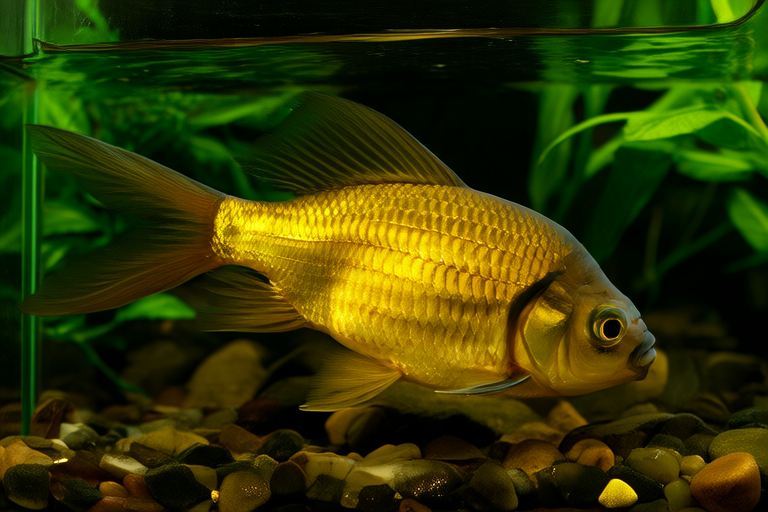Top Secrets for Keeping Your Goldfish Happy and Healthy at All Times
Welcome to the fascinating world of goldfish care! These delightful creatures have captivated pet owners for centuries with their vibrant colors and graceful movements. However, maintaining a happy and healthy goldfish requires more than just a tank and some fish food. This comprehensive guide will provide you with essential tips on creating the perfect environment, ensuring optimal water conditions, feeding a balanced diet, choosing suitable tank mates, conducting regular health checks, and enriching your goldfish’s environment.
Optimal Tank Setup: A Goldfish’s Home Sweet Home
The first step in keeping your goldfish healthy is setting up an appropriate living space. Goldfish are coldwater fish, meaning they thrive in temperatures between 68°F and 74°F (20°C to 23°C). It’s crucial to choose a tank that provides ample swimming room; a general rule of thumb is one gallon of water per inch of fully grown goldfish. For example, if you plan to keep a 5-inch goldfish, you’ll need at least a 5-gallon tank. Larger tanks are even better as they allow more space for swimming and help maintain stable water conditions.
Substrate, or the material at the bottom of the tank, can also influence your goldfish’s well-being. Gravel is a popular choice because it’s easy to clean and provides a natural-looking habitat. However, avoid very fine sand, as it can be ingested during feeding and cause digestive issues. Additionally, ensure that the substrate is free from sharp edges to prevent injuries.
Decorations like plants, caves, and driftwood not only enhance the aesthetic appeal of your tank but also offer hiding spots and stimulation for your goldfish. Live plants can improve water quality by absorbing nitrates and providing oxygen through photosynthesis. However, certain species may be eaten by goldfish, so opt for robust varieties like Anubias or Java Fern. Artificial plants are another excellent option, especially for beginners, as they require less maintenance.
Water Quality Maintenance: The Lifeline of Your Goldfish
Water quality is paramount for the health and longevity of your goldfish. Poor water conditions can lead to stress, disease, and even death. Regular water changes are necessary to remove waste products and maintain proper chemical balance. Aim to change approximately 25% of the water every week, ensuring that you treat the new water with a dechlorinator to neutralize harmful chemicals found in tap water.
Monitoring water parameters is equally important. Use test kits to check ammonia, nitrite, nitrate, pH, and hardness levels. Ammonia and nitrite should always read zero, while nitrates should be kept below 40 ppm. The ideal pH range for goldfish is between 6.5 and 8.0, and hardness should fall within 5-19 dGH. Maintaining these levels ensures that your goldfish remains comfortable and minimizes the risk of health problems.
Filtration plays a critical role in maintaining water quality. Choose a filter that provides both mechanical and biological filtration. Mechanical filtration removes large particles, while biological filtration supports beneficial bacteria that break down harmful compounds. Consider adding an air pump or powerhead to increase oxygen levels in the water, which is particularly beneficial for larger tanks or those housing multiple goldfish.
A Balanced Diet: Fueling Your Goldfish’s Energy
Feeding your goldfish the right diet is key to their overall health. Goldfish are omnivorous, meaning they eat both plant and animal matter. A balanced diet should consist of high-quality flake food, pellets, and occasional live or frozen foods like brine shrimp, bloodworms, and daphnia. These additions provide essential nutrients and variety, promoting optimal growth and vitality.
It’s important to feed your goldfish small amounts multiple times a day rather than one large meal. Overfeeding can lead to poor water quality and obesity. As a guideline, feed them as much as they can consume in two minutes, twice daily. Avoid overloading your tank with uneaten food, as this can contribute to spikes in ammonia and nitrite levels.
Varying their diet is also crucial. Rotate different types of food to ensure a broad spectrum of nutrients. Some commercial foods are fortified with vitamins and minerals, but it’s still beneficial to supplement with fresh vegetables such as zucchini, peas, and spinach. These can be blanched briefly and then fed whole or cut into smaller pieces.
